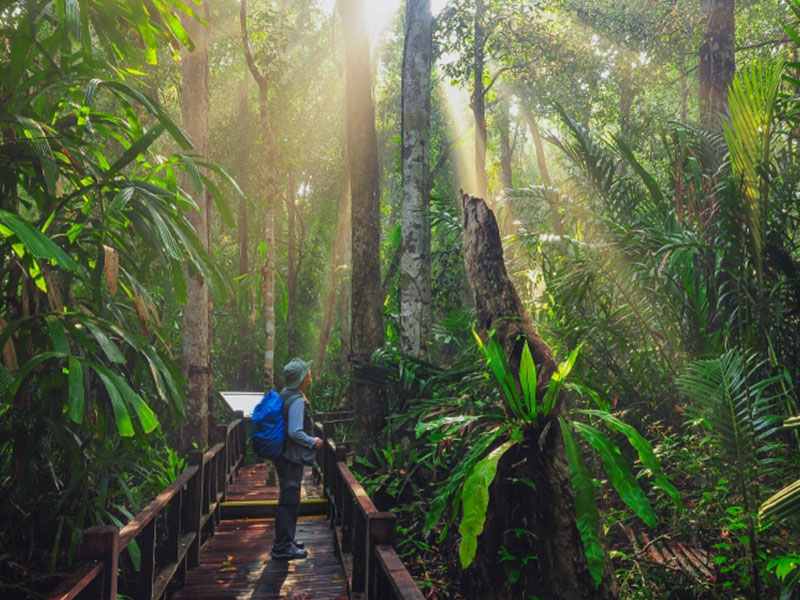Popular check-in points
Search for places to visit in Thailand
Toh Daeng Peat Swamp Forest, Su-ngai Kolok, Su-ngai Kolok | Narathiwat

Toh Daeng Peat Swamp Forest, Su-ngai Kolok, Su-ngai Kolok | Narathiwat
"Toh Daeng Peat Swamp Forest" is the last remaining peat swamp forest in southern Thailand, and indeed Thailand. Occupying a vast area amidst a rich natural environment, this Narathiwat tourist attraction is teeming with a diverse range of flora and fauna. Her Royal Highness Princess Maha Chakri Sirindhorn has visited the area on numerous occasions, leading locals to nickname it the Sirindhorn Peat Swamp Forest.
It is the last remaining peat swamp forest in Thailand, encompassing three districts: Tak Bai, Su-ngai Kolok, and Su-ngai Padi. Covering an area of 120,000 rai, only 50,000 rai is pristine. It is home to a diverse range of wildlife and flora. Important rivers flow through it: the Su-ngai Padi Canal, the Bang Nara River, and the Toh Daeng Canal, hence the forest's name.
This is the last remaining peat swamp forest in Thailand, designated as wetland number 1102 on July 5, 2001, and encompassing three districts: Tak Bai, Su-ngai Kolok, and Su-ngai Padi. And Su-ngai Padi District has an area of approximately 120,000 rai, but the complete part is only 50,000 rai. This To Daeng Peat Swamp Forest is a forest rich in wildlife and flora. There are several important rivers flowing through it, including the Su-ngai Padi Canal, the Bang Nara River, and the To Daeng Canal, which is the origin of the forest's name. The origin of the "Peat Swamp Forest" A peat swamp forest is formed by freshwater basins that remain continuously for many years and have an accumulation of organic matter layers such as plant remains, tree remains, and leaves that slowly decompose into peat or organic soil that is flexible like a sponge, has a low density, and can hold a lot of water. It is also found that there is an accumulation of peat and marine sediment in 2-3 layers. This is because the sea level once rose until it flooded the peat forest, causing the accumulation of sediment. When the sea water was trapped inside and the plants in the peat forest died, mangrove forests emerged in its place. When the sea level dropped and there was rain, The salinity from the stagnant water gradually washed away, turning it into fresh water and regenerating the peat forest. The lower peat soil is 6,000-7,000 years old, while the upper peat soil is 700-1,000 years old. Peat forest ecosystem
Village 5, Su-ngai Kolok Road, Su-ngai Kolok, Narathiwat


Thailand travel guide..
City Highlights Temple , Market Walking Tour and more....
Travel in other provinces
Thailand has a variety of tourist attractions, both natural and cultural, and many interesting activities. During this time, there are recommended places to visit, such as visiting the fields of wild ginger flowers at Sai Thong National Park, watching the sea of mist at Khao Kho, or experiencing nature at Umphang.
All Provinces


